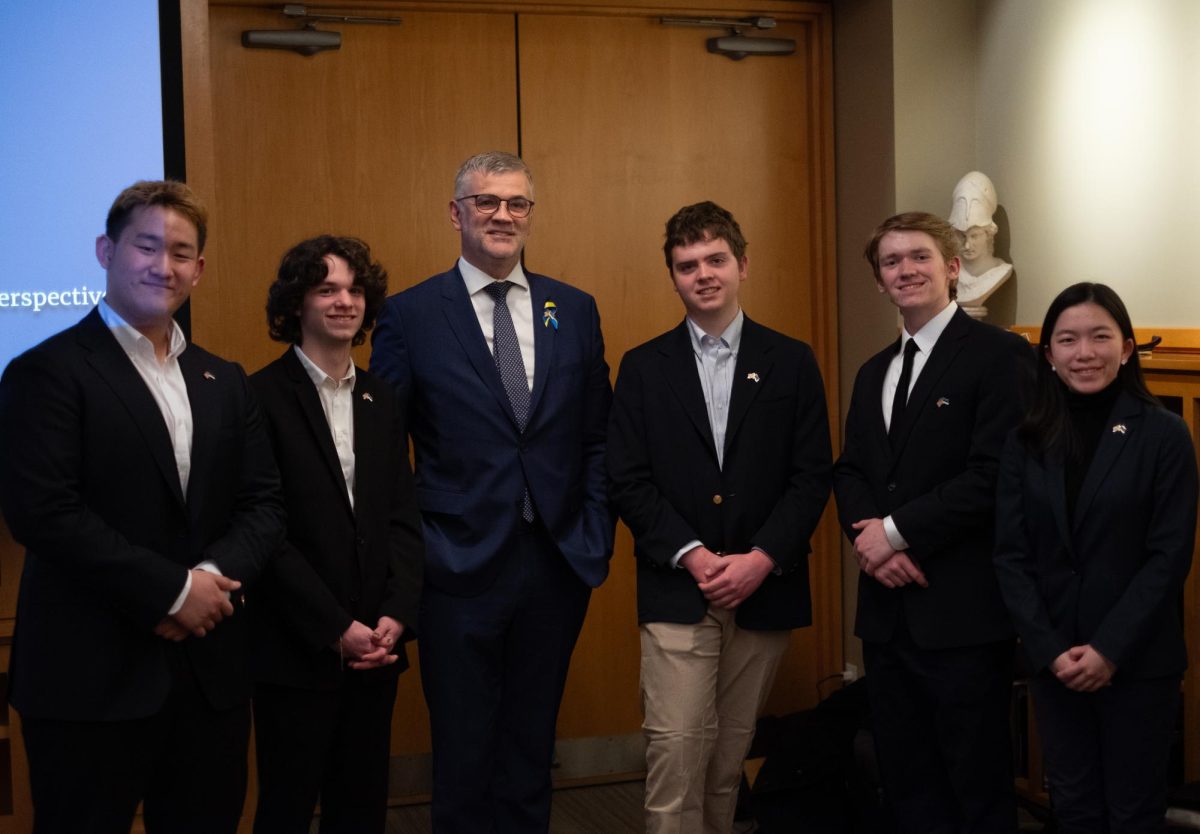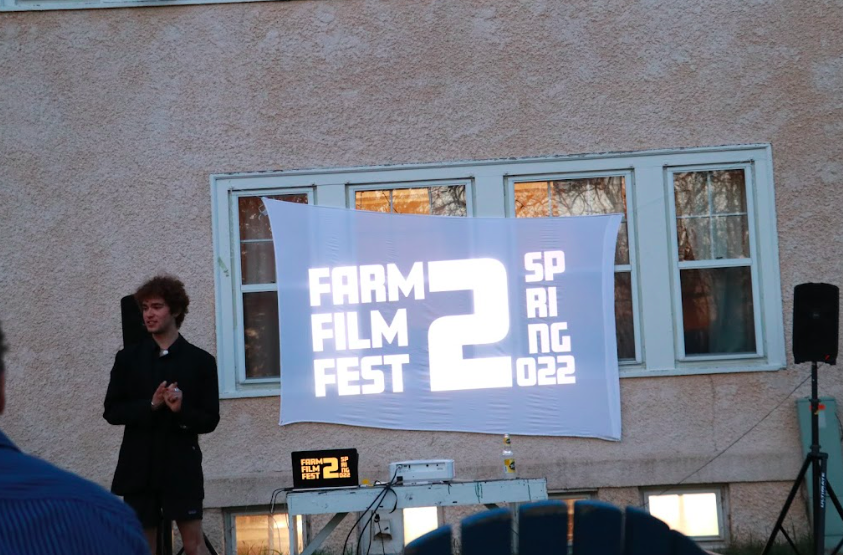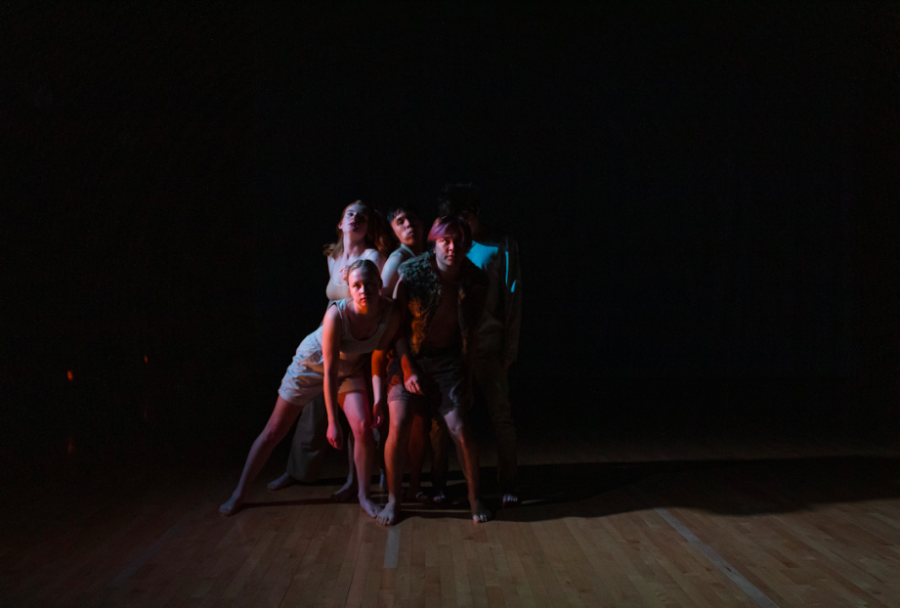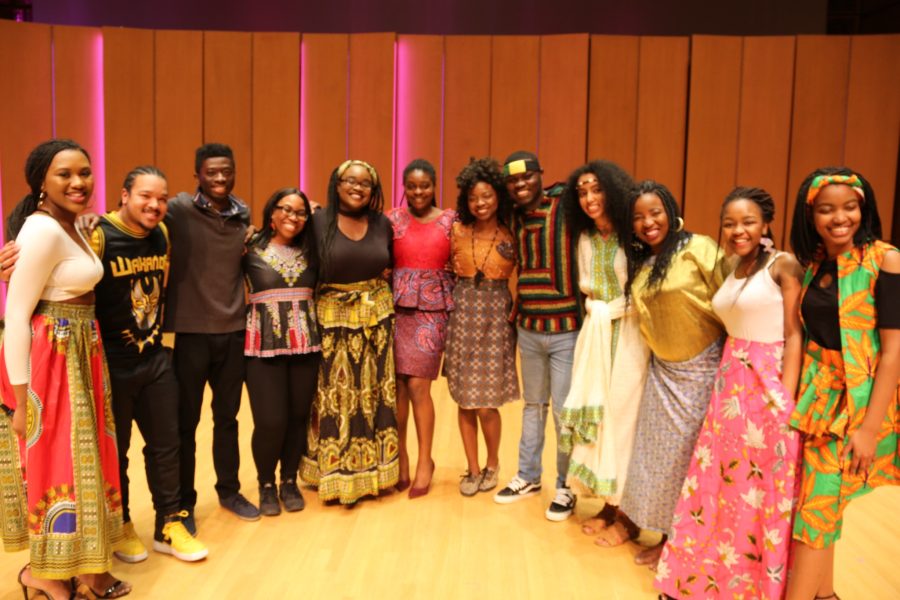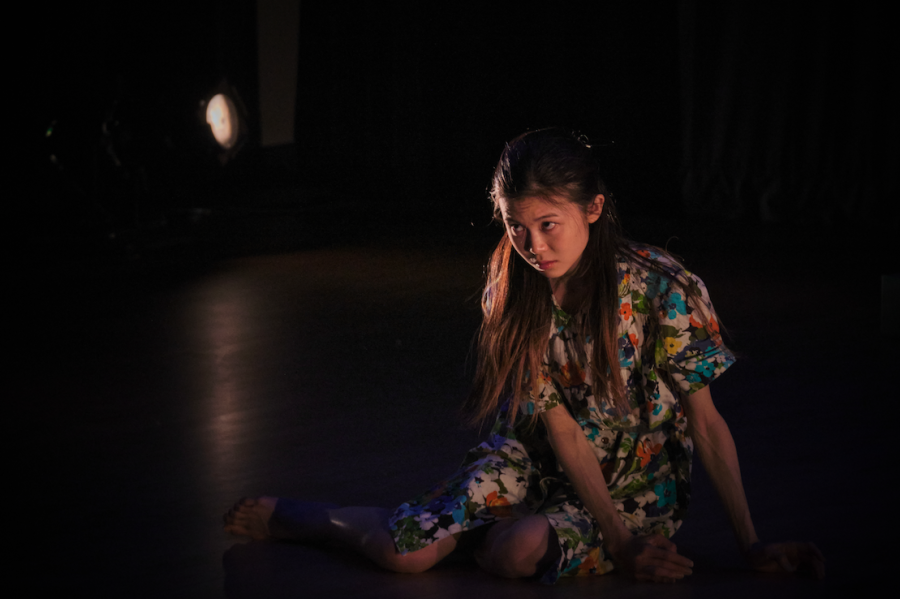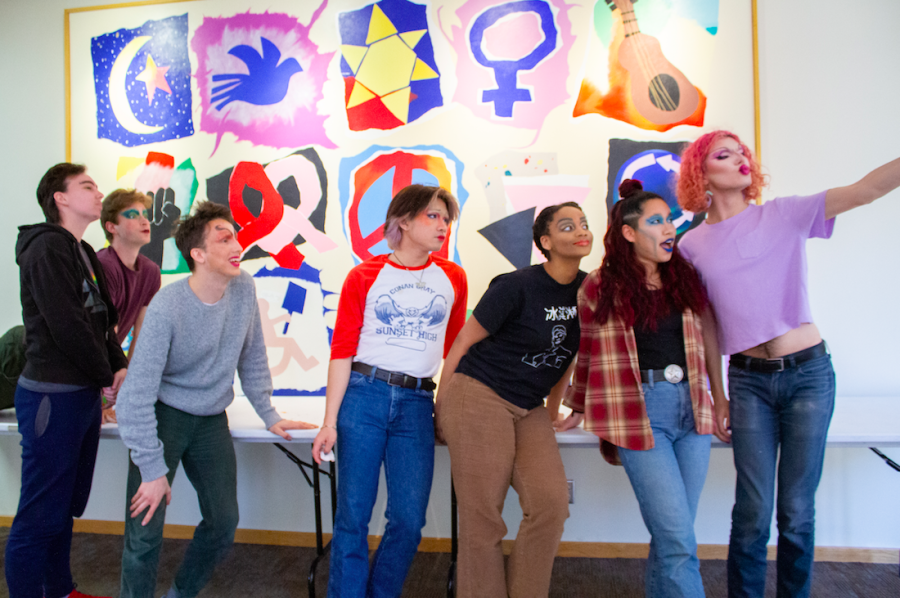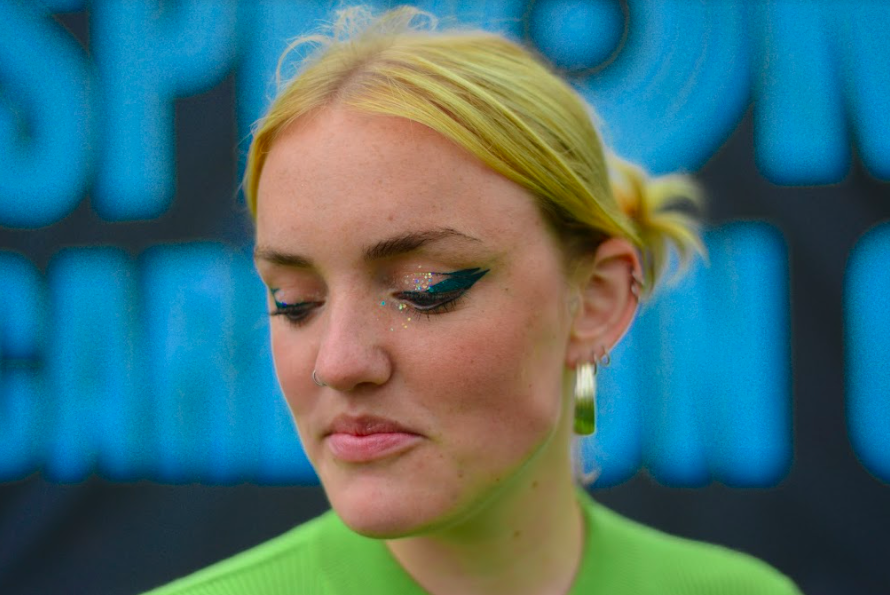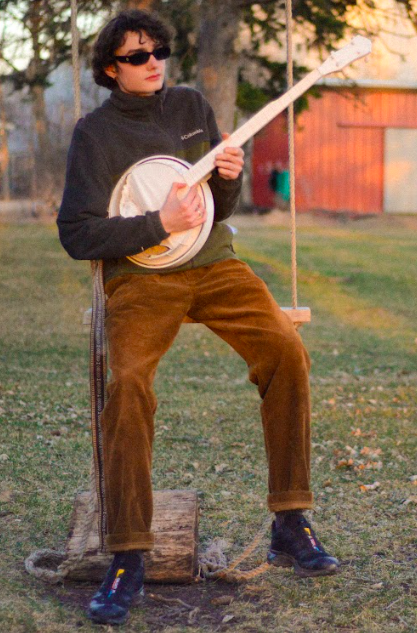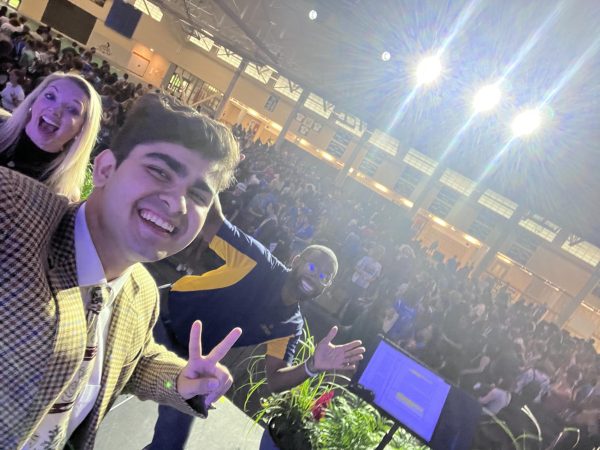My art display was vandalized last term. I made hundreds of copies and a few banners with blacked-out images of my old and current passports. I stuck them on every available pinboard around campus. It was the week preceding the election, and I needed to respond in some way to the endless isolation of being a “non-resident alien,” subject to a concerted political effort to dehumanize and weaponize a hatred of the “other.” I spent many hours printing and writing applications to get funding for this project — making special editions for specific places on campus. One of the banners was even displayed in a gallery in Minneapolis. This work emerged from a deep-seated fear and personal strife. Then, another student at Carleton tore down that work, altered it, and threw it away.
Names are irrelevant; actions are not. The large banner that I had taped to the Sayles banister was torn off its place in the middle of convocation time on a Friday, folded into a paper airplane and was about to be thrown away if not for the intervention of my friends. Upon confrontation with the vandal, my friends interrogated them and asked why. “It’s ugly, and I don’t like looking at it, and it’ll be taken down anyway,” said the vandal. When my friends argued about the relevance of the election season and the importance of the work to immigrant and international students, they replied, “I’m an American citizen; I don’t care about that.” This person had taken down more than a few of the smaller posters, but the deliberate intent of taking down the banner (in front of about a dozen witnesses) and their comments afterward were what shook me. Reports were filed, and things happened, but now, a few months after the incident, my emotions have dulled slightly, and with this current administration firmly in place, I’d like to share several thoughts and concepts about this event.
My initial response was visceral and emotional. It is impossible to separate yourself from work you spend dozens of hours making, talking about and performing. I wrote a trainwreck of an article near the incident that, thankfully, was not published. In a way, the vandalism was a perfect mirror of everything wrong with the world that the work was meant to criticize. It was years of being not like everyone else, not a citizen, not white, not American, not allowed to do the things that everyone else could and being the frightening “other” that went into the display. In erasing the information on my passports, in erasing my face, I tried to get at the reality of being an “unperson,” a part, but not a part, of a system that wants your money, and time and labor but not you. I tried to create a space that made apparent the flaws of the system, and that space, too, was not allowed to exist (for a brief moment, granted, since I put it back up the next day).
In practical terms, all that happened was some big paper was folded up and tossed, but contextually, in a climate of migrant hate mongering and systemic violence, the vandalism was another act in a long series of prior acts reifying power over people, systems over humans and the privileged over the dispossessed. It was another statement telling me that I am not welcome, that I am not worth listening to and I am not allowed to speak. The vandal may have thought their act was revolutionary, their own version of performance in folding the banner as they did. Still, all it did was repeat the same “-isms” and sentiments of the system that minorities transnationally have come to expect from the world. It was a reinforcement of the machine, an act that supported the worst of the status quo and just kind of boring and silly.
In another way, the defacement was a backhanded compliment. I spent the entirety of last summer in a studio making art for my first exhibition, and a question often crossed my mind: what is the impact of what I was making? We see hundreds of thousands of images in advertising, marketing and art; what does one more add or subtract to the noise? The sick pleasure in the defacement is the undeniable reality that my display drove the vandal to respond. They could not ignore it, marginalize it or turn away. They turned inward, felt weird and targeted by it, and acted on their disgust. The emotions it inspired in them were significant enough to spur them to (stupid) action, based simply on observing the image I created. To me, the saddest thing in art is being ignored. Throwing something out there and receiving no response is like staring into an abyss that does not even stare back at you. Their disgusted response is not a negation of the work but a response to the criticisms it presents, and in doing so, acknowledges some measure of truth or power inherent in the image or message in the work. The work spoke to something — someone could not tune out or tolerate it and was compelled to destroy it. There is something fundamentally powerful about that, and it shouldn’t be ignored.
The statements “it’s ugly” and “I’m an American citizen, I don’t care about that” should also be scrutinized. The denigration of art that is not “classically beautiful” — that does not conform to Eurocentric visions of idealistic people and landscapes or canons — is often a feature in societies sliding towards fascism. Entartete Kunst, or “Degenerate Art,” was destroyed, ridiculed and mocked in Nazi Germany for not elevating the state and the Aryan race. Initiatives to censor art in the United States have often taken the same tone towards modern art, calling for the defunding of grants or decrying transgressive work as non-art or degenerate. Now, there is a jump from that to this act of vandalism.
I’m getting at two things: first, the privileging of majoritarian viewpoints to dictate art, and second, a reveling in anti-intellectualism. Bearing in mind that the vandalism took place at the busiest time in Sayles, the utter disconnection and privilege it takes to do something like that gets to a superiority complex that I can only describe as delusional. Why should your aesthetic taste dictate what others make? Why do you get to be the arbiter of what gets to be put up? Well, I can guess why. Being an American, more protected (though not entirely) from the system, gave them the chutzpah to destroy work from someone lower than them on the hierarchy. I cannot help but accredit this mentality to the political leadership in this country, emboldening an entirely self-centered and narcissistic view of social relations. Why should an American care?
The anti-intellectualism is what bothers me most. There is a growing number of people in all aspects of politics who are far too comfortable in their positions. Holding the “correct” positions without understanding the underlying axioms and principles results in dogma that sometimes happens to be helpful, instead of pushing for more significant progress based on solid principles and foundations. Instead of engaging with the art, having a conversation with me or someone else about why the art is uncomfortable, instead of being intellectually rigorous, the disappointing response was tearing it down to erase any discussion around it. For me, the conversation around the piece tends to either feature or conspicuously ignore the elephant-shaped vandalism in the room, as opposed to just talking about what the work could mean for different people. At an institution that prides itself on its rigor, there are actual human beings here who would rather tear things down than think, and that’s the real tragedy. Pulling this all together, the vandalism was a cowardly, dumb and incredibly revealing insight into the power that art holds, dialogues around fascism and how the actions of one person can be both a singular action yet endemic of a system that in many subtle ways does the same thing over and over again. Maybe don’t vandalize art, but if you do, just know that there are many lessons to be learned from your foolishness that I’m not sure you’ll understand, but are nonetheless insightful for the rest of us who want to learn and listen.

